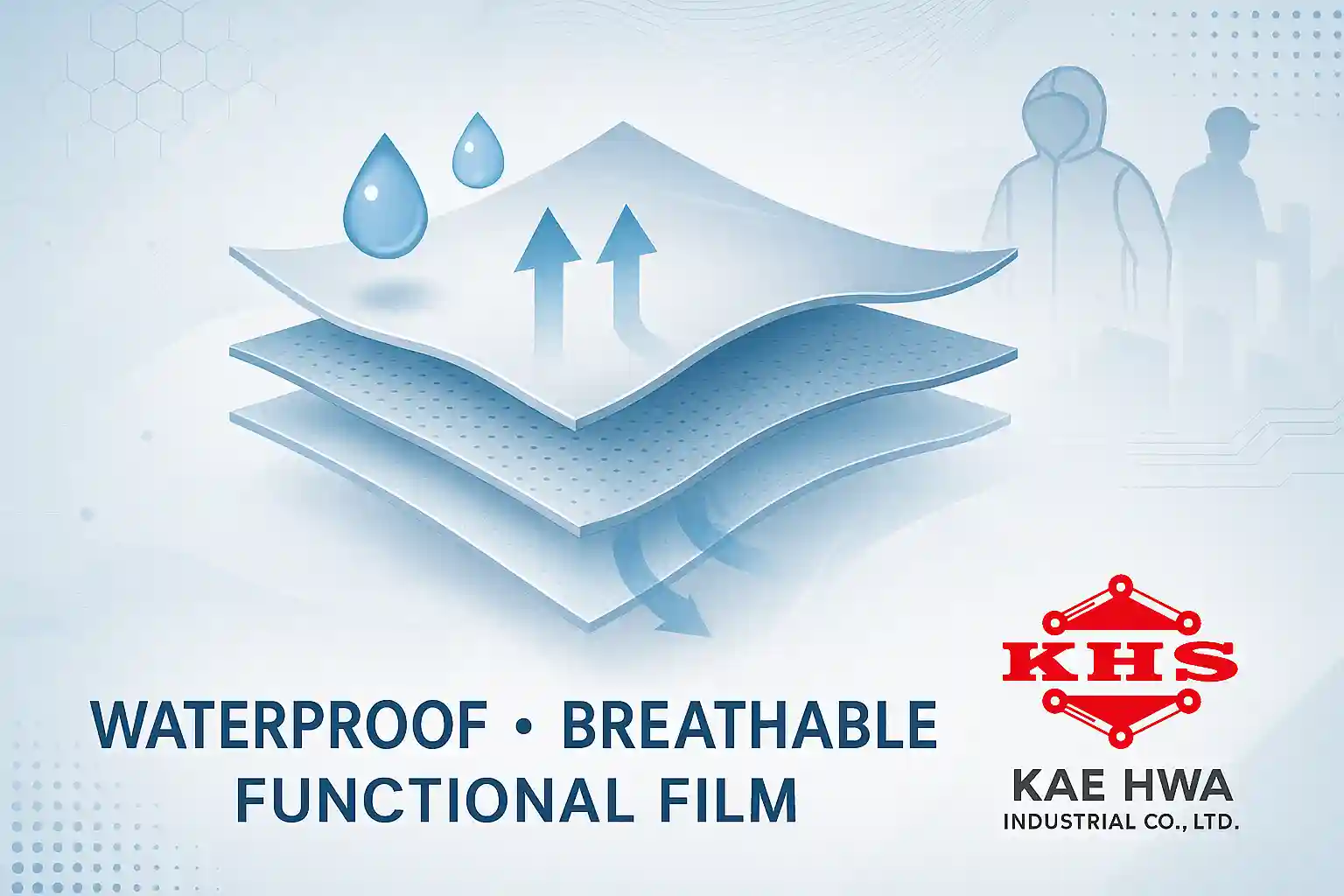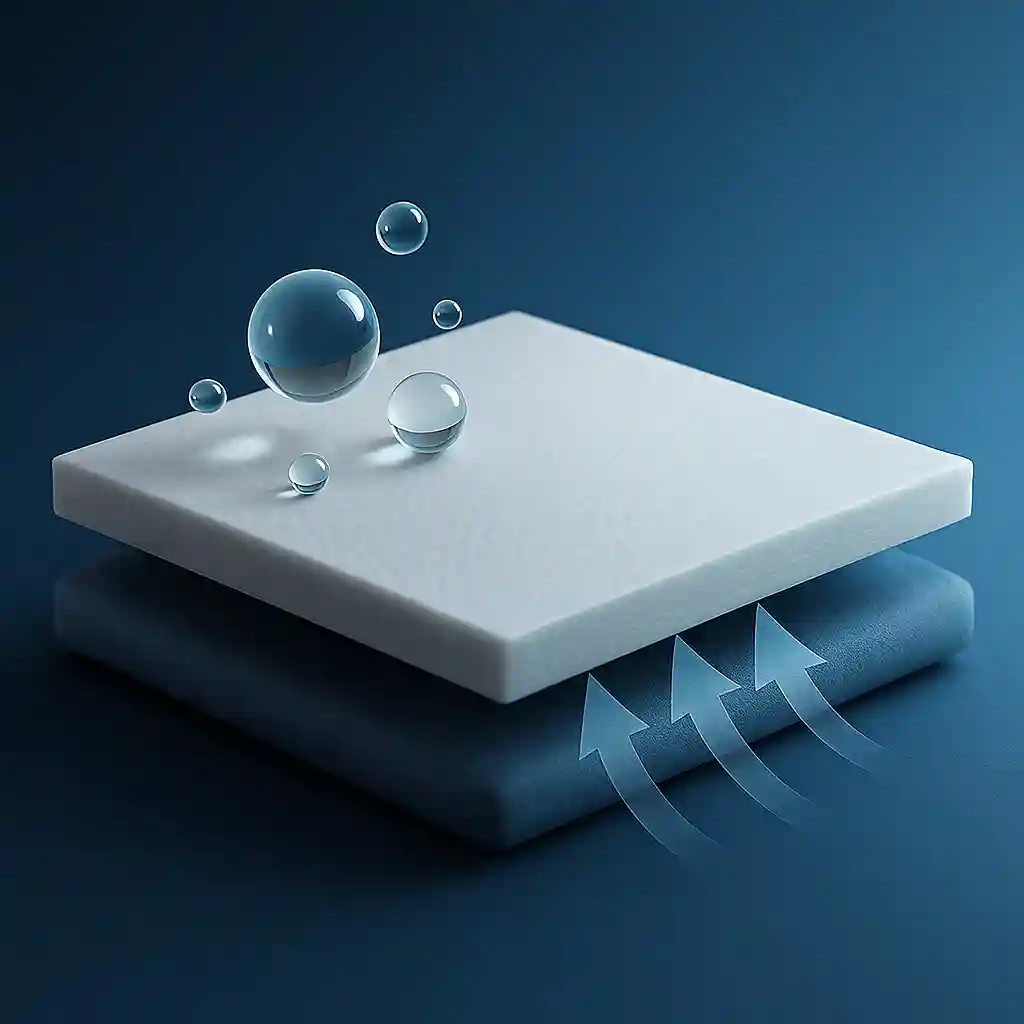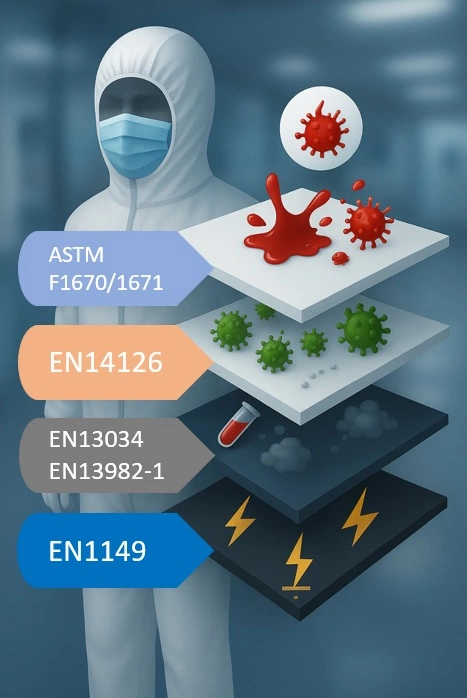Kae Hwa Waterproof & Breathable Membrane Technology — Science of Protection & Comfort

When a raindrop lands softly on a fabric but never penetrates to the inside; when heat and humidity quietly build up only to be released a moment later—that magical effect is the golden balance of waterproofing and breathability. At Kae Hwa, we are pioneers dedicated to perfecting this balance across industries, from everyday apparel to medical protection, from car covers to building membranes. We never compromise on performance.
Why Choosing the Right Material Matters: The Key to Waterproof & Breathable Balance

You might think:
“A raincoat only needs to block rain, and a car cover must be waterproof—so why worry about breathability?”
In fact, waterproofing and breathability are not opposing forces but interdependent functions:
- Block external moisture to protect structures and contents from rain, splashes, or chemical corrosion;
- Release internal moisture and heat to keep surfaces dry, extend product life, and prevent mold.
Depending on the application, each function may be more critical:
- Outdoor performance apparel & rain gear: Trapped sweat causes dampness and mold, affecting comfort and health.
- Car covers & equipment tarps: Temperature swings condense internal moisture, leading to corrosion or coating damage.
- Building waterproofing membranes: In wood or composite wall assemblies, trapped vapor can warp structures or foster mold growth, compromising safety.
- Medical & hygiene products: Surgical gowns or isolation wear that only repel liquid can trap heat and moisture, increasing skin irritation and risk of dermatitis.
At Kae Hwa, our core technology integrates both functions—using microporous structures or polymer diffusion mechanisms within a single membrane layer.
International Standards for Waterproof & Breathable Materials—What Do You Know?

When materials are used in high-risk scenarios, judging by feel or thickness alone is not enough. True reliability comes from rigorous international testing:
- ASTM F1670 / F1671: Synthetic blood and viral fluid penetration tests—the benchmark for medical fabrics.
- EN 14126: Pathogen protection performance for isolation and protective apparel.
- EN 13034 (Type 6) / EN 13982-1 (Type 5): Liquid splash and hazardous dust barrier tests for chemical and industrial environments.
- EN 1149: Electrostatic discharge protection standard.
- ISO 9001: Quality Management System certification, ensuring traceable and continuously improving manufacturing processes.
Every Kae Hwa fabric and film undergoes these rigorous tests—our promise of proven performance.
Our Principle: Performance Driven by Data, Not Assumptions
A material's value cannot be judged by appearance or feel alone. Kae Hwa insists on:
- Quantitative data: All material properties are verified by third-party laboratory reports.
- Tailored formulations: We select single-layer films, microporous membranes, or composite constructions based on MVTR (Moisture Vapor Transmission Rate), tensile strength, wash durability, and chemical resistance.
- Continuous R&D optimization: Every test failure prompts us to refine formulas or processes in the lab until standards are met.
This R&D process ensures our products consistently deliver waterproof and breathable performance under the most demanding conditions.
Want to Learn More About Our Products & Testing?
Kae Hwa gladly shares detailed technical information and test reports. Whether for medical protection, industrial applications, or outdoor performance, we offer OEM/ODM customization—from film selection to wide-width slitting—to meet your every requirement.
👉 Click to explore more products and testing videos
FAQ
Q1: How do waterproof & breathable materials work?
They rely on microporous structures (e.g., microporous membranes) or polymer diffusion mechanisms to block liquid water (waterproofing) while allowing water vapor molecules (breathability) to pass through.
Q2: What is the difference between ASTM F1671 and EN 14126?
ASTM F1671 focuses on viral fluid penetration testing; EN 14126 evaluates overall pathogen protection. Both are commonly used to verify medical-grade protective fabrics.
Q3: Can Kae Hwa's materials be customized?
Yes. We provide OEM/ODM services—including structure design, coating formulation, and post-processing—to tailor products to your specific application requirements.
Q4: Which industries use these membranes?
Medical protection (surgical gowns, isolation wear), industrial safety (chemical suits, dust covers), outdoor performance apparel, building waterproofing membranes, desiccant packaging, and personal hygiene products.